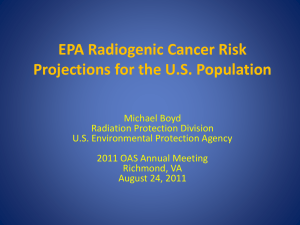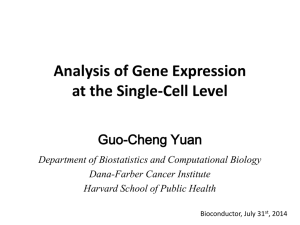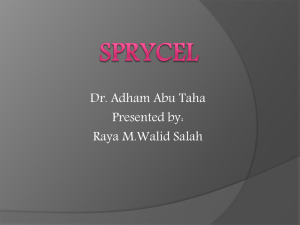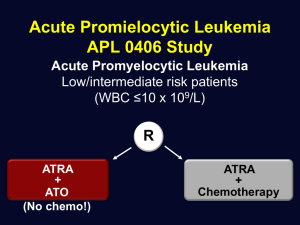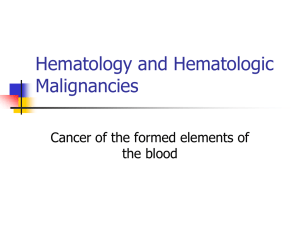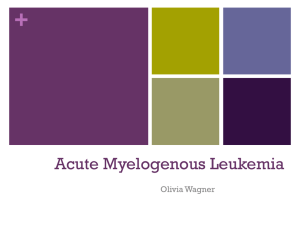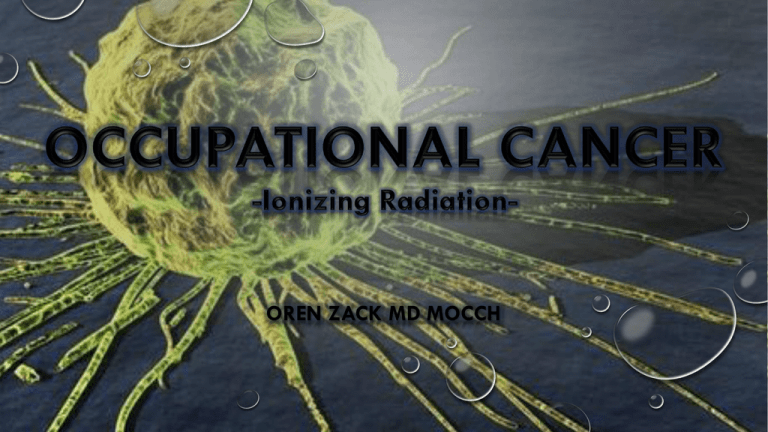
OREN ZACK MD MOCCH
Introduction
• Twenty-nine occupational agents, as well as 18 exposure circumstances are carcinogenic to humans
• It has been known for over 200 years that exposures encountered at the workplace are a cause of cancer
• Initially detected by clinicians: Percival Pott - scrotal cancer, chimney sweeps (soot) (1771), Creech and
Johnson’s – liver angiosarcoma, vinyl chloride workers (1974)
• The period of formal epidemiological assessment of the occurrence of cancer in relation to workplace
exposures started after World War II. Knowledge of the occupational and other environmental causes of
cancer grew rapidly in the 1950s and 1960s.
• Estimates of the burden of occupational cancer in high-resource countries are in the order of 2–5%.
Group 1: World Cancer Report, 2008
Group 2A: World Cancer Report, 2008
Introduction (cont.)
• The distinction between occupational and environmental carcinogens is not always straightforward
• Exposure levels tend to be higher at the workplace
• There are agents that have been evaluated in IARC groups 1 or 2A, for which exposure is not primarily
occupational, but which often encountered in the occupational environment
• Nursing staff - cyclophosphamide, cyclosporine
• Food processors – aflatoxins
• Medical personnel – HBV, HCV, HIV
• Agriculture, fishing, outdoor occupants – solar radiation
• Public settings, bars – secondhand tobacco smoke
Introduction (cont.)
• Polycyclic aromatic hydrocarbons (PAHs) represent a specific problem in the identification of occupational
carcinogens
• Includes several potent experimental carcinogens, such as benzo[a]pyrene, benz[a]anthracene and
dibenz[a,h]anthracene.
• However, humans are always exposed to mixtures of PAHs and an assessment of the carcinogenicity of individual PAHs
in humans is difficult
• Current understanding of the relationship between occupational exposures and cancer is far from complete; in
fact, for many experimental carcinogens no definitive evidence is available from exposed workers.
• In some cases, there is considerable evidence of increased risks associated with particular industries and
occupations, although no specific agents can be identified as etiological factors
• Fifteen occupations and industries are listed in IARC Group 1 and four in Group 2A
World Cancer Report, 2008
Difficulties in Establishing Causality
• Constructing and interpreting lists of chemical or physical carcinogenic agents and associating them with specific
occupations and industries is complicated by a number of factors:
• Information on industrial processes and exposures is frequently poor, not allowing a complete evaluation of the
importance of specific carcinogenic exposures in different occupations or industries
• Exposures to well-known carcinogenic exposures, such as vinyl chloride and benzene, occur at different intensities in
different occupational situations
• Changes in exposure occur over time in a given occupational situation, either because identified carcinogenic agents
are substituted by other agents or (more frequently) because new industrial processes or materials are introduced
• Any list of occupational exposures can only refer to the relatively small number of chemical exposures that have been
investigated with respect to the presence of a carcinogenic risk
• A single figure on the proportion of cancers due to occupations might be misleading as exposure concentrates
on subgroups of the population, namely male blue-collar workers, among whom the burden can be substantial.
Other Factors
• The increasing employment of women in jobs outside the home has probably contributed to changes in
reproductive habits, which may entail an increased risk of hormone-related cancers
• Shiftwork that involves circadian disruption has been classified as a probable human carcinogen by the IARC
Monographs Program, on the basis of limited evidence of an increased risk of breast cancer
• Occupational cancer is likely to be a more important problem in medium- and low-resource countries than in
high-resource countries:
• Importance of the informal sector
• Lack of stringent implementation of existing regulations
• Low level of attention paid by management and the workforce to industrial hygiene
• Presence of child labor
Frequent Tumor Sites: Occupational
• Lung
• Urinary bladder
• Nasal cavity
• Liver (angiosarcoma)
• Mesothelioma
• Leukemia
• Non-melanocytic skin cancer
Carcinogenesis
• Cancer is a multi-step process during which cells undergo profound metabolic and behavioral changes, leading
them to proliferate in an excessive and untimely way, to escape surveillance by the immune system, and
ultimately to invade distant tissues to form metastases
Initiators and Promoters
Initiators
Promoters
One time exposure sufficient
Repeated exposure usually necessary
No threshold
There is both a threshold and a maximum
effect of promoters
Carcinogenic
No effect without the initiator
Bind to DNA
Do not covalently bind to DNA /
macromolecules
Effect irreversible
Reversible effect
Mutagenic
Non-mutagenic
• Examples:
• Examples:
• PAH
• Methylnitrosurea
• Croton oil
• Saccharin
• Tobacco smoke
• 2-naphthylamine
• Tobacco smoke
• D, L Tryptophan
• Diethyl-nitrosamine
• 2-Acetylaminofluorene
• DDT, PCBs
• Phenobarbital
Oncogenes and TSGs
International Agency for Research on Cancer
(IARC)
Monograph Program
• The International Agency for Research on Cancer was established in May, 1965
• Monograph program is functioning since 1971
• More than 900 agents have been evaluated, of which more than 400 have been identified as carcinogenic,
probably carcinogenic, or possibly carcinogenic to humans
• Objective: identifying environmental factors that can increase the risk of human cancer
Agents Classified by the IARC Monographs,
Volumes 1-108
Group
Classification
Number of agents classified
Group 1
The agent, mixture, or exposure circumstance is carcinogenic to
humans
111
Group 2A
The agent, mixture, or exposure circumstance is probably
carcinogenic to humans
66
Group 2B
The agent, mixture, or exposure circumstance is possibly
carcinogenic to humans
285
Group 3
The agent, mixture, or exposure circumstance is not classifiable
as to its carcinogenicity to humans
505
Group 4
The agent, mixture, or exposure circumstance is probably not
carcinogenic to humans
1
IARC Classification
• Evaluations of the epidemiological and experimental evidence of the carcinogenicity are performed for
chemicals, complex mixtures, occupational exposures, physical and biological agents, and lifestyle factors.
• Agents are selected by the IARC to be evaluated if there is evidence that exposure occurs in humans, and also
if there is suspicion that the agent could cause cancer.
• The evidence used in the IARC monographs is based on
• Exposure data
• Epidemiological studies
• Studies in experimental animals
• Data on mechanisms of action (e.g. kinetics, mutagenicity)
IARC Classification (cont.)
• The IARC does not categorize the carcinogens evaluated as for the source of exposure and therefore does not
indicate which should be considered as occupational.
• To identify which carcinogens could be classified as occupational, it is necessary to review the text of the
monographs and then apply ad hoc criteria.
• The identification and listing of exposures that could be defined as occupational can be complex. Many
occupational exposures also occur in the general environment and, vice versa, many predominantly
environmental exposures occur in the occupational environment.
Carcinogenicity in Humans
• Sufficient evidence of carcinogenicity
• A causal relationship has been established between exposure to the agent and human cancer. That is, a positive relationship
has been observed between the exposure and cancer in studies in which chance, bias and confounding could be ruled out
with reasonable confidence
• Limited evidence of carcinogenicity
• A positive association has been observed, but chance, bias or confounding could not be ruled out with reasonable confidence
• Inadequate evidence of carcinogenicity
• Available studies are of insufficient quality, consistency or statistical power to permit a conclusion regarding the presence or
absence of a causal association between exposure and cancer, or no data on cancer in humans are available
• Evidence suggesting lack of carcinogenicity
• Several adequate studies covering the full range of levels of exposure that humans are known to encounter, which are
mutually consistent in not showing a positive association between exposure to the agent and any studied cancer at any
observed level of exposure
Carcinogenicity in Experimental Animals
• Sufficient evidence of carcinogenicity
• A causal relationship has been established between the agent and an increased incidence of malignant neoplasms or of an
appropriate combination of benign and malignant neoplasms in (a) two or more species of animals or (b) two or more
independent studies in one species carried out at different times or in different laboratories or under different protocols
• An increased incidence of tumors in both sexes of a single species in a well-conducted study, ideally conducted under Good
Laboratory Practices, can also provide sufficient evidence
• A single study in one species and sex might be considered to provide sufficient evidence of carcinogenicity when malignant
neoplasms occur to an unusual degree with regard to incidence, site, type of tumor or age at onset, or when there are strong
findings of tumors at multiple sites
• Limited evidence of carcinogenicity
• (a) the evidence of carcinogenicity is restricted to a single experiment;
• (b) there are unresolved questions regarding the adequacy of the design, conduct or interpretation of the studies;
• (c) the agent increases the incidence only of benign neoplasms or lesions of uncertain neoplastic potential; or
• (d) the evidence of carcinogenicity is restricted to studies that demonstrate only promoting activity in a narrow range of
tissues or organs
Carcinogenicity in Experimental Animals
• Inadequate evidence of carcinogenicity
• Evidence suggesting lack of carcinogenicity
• Studies involving at least two species are available which show that, within the limits of
the tests used, the agent is not carcinogenic
• A conclusion of evidence suggesting lack of carcinogenicity is inevitably limited to the
species, tumour sites, age at exposure, and conditions and levels of exposure studied
Mechanistic and Other Relevant Data
• Data on preneoplastic lesions, tumor pathology, genetic and related effects, structure-activity relationships,
metabolism and toxicokinetics, physicochemical parameters and analogous biological agents
• Strength of evidence: weak, moderate or strong
• Working Group assesses whether the particular mechanism is likely to be operative in humans
• Data may be considered to be especially relevant if they show that the agent in question has caused changes in
exposed humans that are on the causal pathway to carcinogenesis
• The conclusion that a mechanism operates in experimental animals is strengthened by findings of consistent
results in different experimental systems, by the demonstration of biological plausibility and by coherence of
the overall database
• Multiple mechanisms might contribute to tumor development
• Different mechanisms might operate in different dose ranges
• Separate mechanisms might operate in humans and experimental animals
• A unique mechanism might operate in a susceptible group
Group
Epidemiological
evidence
1 – Carcinogenic to humans Sufficient
Less than sufficient
2A – probably carcinogenic Limited
to humans
Inadequate
Exceptionally: Limited
2B – possibly carcinogenic Limited
to humans
Inadequate
Inadequate
Exceptionally:
Inadequate
3 – not classifiable as
carcinogenic to humans
Inadequate
4 – probably not
Suggesting lack of
carcinogenic to humans
carcinogenicity
Inadequate
Animal evidence
Other evidence
Any
Sufficient
Sufficient
Sufficient
Any
Relevant mechanism
Any
Relevant mechanism
Less than sufficient
Sufficient
Less than sufficient
Any
Limited / inadequate
Sufficient
Suggesting lack of
carcinogenicity
Suggesting lack of
carcinogenicity
Relevant mechanism
Strong mechanistic
Mechanistic against
Any
Strongly negative
mechanistic
Group 1 Agents, Volumes 1-108
Agent
Group
Volume
Year
Acetaldehyde associated with consumption of alcoholic beverages
1
100E
2012
Acid mists, strong inorganic
1
54, 100F
2012
Aflatoxins
1
56, 82, 100E
2012
Alcoholic beverages
1
44, 96, 100E
2012
Aluminum production
1
34, Sup 7, 100F
2012
4-Aminobiphenyl
1
1, Sup 7, 99, 100F
2012
Areca nut
1
85, 100E
2012
Aristolochic acid
(NB: Overall evaluation upgraded to Group 1 based on mechanistic and other
relevant data)
1
82, 100A
2012
Aristolochic acid, plants containing
1
82, 100A
2012
Arsenic and inorganic arsenic compounds
1
23, Sup 7, 100C
2012
Asbestos
(all forms, including actinolite, amosite, anthophyllite, chrysotile, crocidolite, tremolite)
(NB: Mineral substances (e.g. talc or vermiculite) that contain asbestos should also be
regarded as carcinogenic to humans.)
1
14, Sup 7, 100C
2012
Group 1 Agents, Volumes 1-108
Agent
Group
Volume
Year
Auramine production
1
Sup 7, 99, 100F
2012
Azathioprine
1
26, Sup 7, 100A
2012
Benzene
1
29, Sup 7. 100F
2012
Benzidine
1
29, Sup 7, 99, 100F
2012
Benzidine, dyes metabolized to
(NB: Overall evaluation upgraded to Group 1 based on mechanistic and other
relevant data)
1
99, 100F
2012
Benzo[a]pyrene
(NB: Overall evaluation upgraded to Group 1 based on
mechanistic and other relevant data)
1
92, 100F
2012
Beryllium and beryllium compounds
1
58, 100C
2012
Betel quid with tobacco
1
85, 100E
2012
Betel quid without tobacco
1
85, 100E
2012
Bis(chloromethyl)ether; chloromethyl methyl ether (technical-grade)
1
4, Sup 7, 100F
2012
Busulfan
1
4, Sup 7, 100A
2012
1,3-Butadiene
1
97, 100F
2012
Group 1 Agents, Volumes 1-108
Agent
Group
Volume
Year
Cadmium and cadmium compounds
1
58, 100C
2012
Chlorambucil
1
26, Sup 7, 100A
2012
Chlornaphazine
1
4, Sup 7, 100A
2012
Chromium (VI) compounds
1
49, 100C
2012
Clonorchis sinensis (infection with)
1
61, 100B
2012
Coal, indoor emissions from household combustion of
1
95, 100E
2012
Coal gasification
1
92, 100F
2012
Coal-tar distillation
1
92, 100F
2012
Coal-tar pitch
1
35, Sup 7, 100F
2012
Coke production
1
92, 100F
2012
Cyclophosphamide
1
26, Sup 7, 100A
2012
Cyclosporine
1
50, 100A
2012
Diethylstilbestrol
1
21, Sup 7, 100A
2012
Engine exhaust, diesel
1
46, 105
In prep
Group 1 Agents, Volumes 1-108
Agent
Group
Volume
Year
Epstein-Barr virus
1
70, 100B
2012
Erionite
1
42, Sup 7, 100C
2012
Estrogen therapy, postmenopausal
1
72, 100A
2012
Estrogen-progestogen menopausal therapy (combined)
1
72, 91, 100A
2012
Estrogen-progestogen oral contraceptives (combined)
(NB: There is also convincing evidence in humans that these agents confer a protective
effect against cancer in the endometrium and ovary)
1
72, 91, 100A
2012
Ethanol in alcoholic beverages
1
96, 100E
2012
Ethylene oxide
(NB: Overall evaluation upgraded to Group 1 based on mechanistic and other
relevant data)
1
97, 100F
2012
Etoposide
(NB: Overall evaluation upgraded to Group 1 based on mechanistic and other
relevant data)
1
76, 100A
2012
Etoposide in combination with cisplatin and bleomycin
1
76, 100A
2012
Fission products, including strontium-90
1
100D
2012
Formaldehyde
1
88, 100F
2012
Haematite mining (underground)
1
1, Sup 7, 100D
2012
Group 1 Agents, Volumes 1-108
Agent
Group
Volume
Year
Helicobacter pylori (infection with)
1
61, 100B
2012
Hepatitis B virus (chronic infection with)
1
59, 100B
2012
Hepatitis C virus (chronic infection with)
1
59, 100B
2012
Human immunodeficiency virus type 1 (infection with)
1
67, 100B
2012
Human papillomavirus types 16, 18, 31, 33, 35, 39, 45,
51, 52, 56, 58, 59
(NB: The HPV types that have been classified as carcinogenic to humans can differ by
an order of magnitude in risk for cervical cancer)
1
64, 90, 100B
2012
Human T-cell lymphotropic virus type I
1
67, 100B
2012
Ionizing radiation (all types)
1
100D
2012
Iron and steel founding (occupational exposure during)
1
34, Sup 7, 100F
2012
Isopropyl alcohol manufacture using strong acids
1
Sup 7, 100F
2012
Kaposi sarcoma herpesvirus
1
70, 100B
2012
Leather dust
1
100C
2012
Magenta production
1
57, 99, 100F
2012
Melphalan
1
9, Sup 7, 100A
2012
Group 1 Agents, Volumes 1-108
Agent
Group
Volume
Year
Methoxsalen (8-methoxypsoralen) plus ultraviolet A radiation
1
24, Sup 7, 100A
2012
4,4'-Methylenebis(2-chloroaniline) (MOCA)
(NB: Overall evaluation upgraded to Group 1 based on mechanistic and other
relevant data)
1
57, 99, 100F
2012
Mineral oils, untreated or mildly treated
1
33, Sup 7, 100F
2012
MOPP and other combined chemotherapy including alkylating agents
1
Sup 7, 100A
2012
2-Naphthylamine
1
4, Sup 7, 99, 100F
2012
Neutron radiation
(NB: Overall evaluation upgraded to Group 1 with supporting evidence from other
relevant data)
1
75, 100D
2012
Nickel compounds
1
49, 100C
2012
N'-Nitrosonornicotine (NNN) and 4-(NNitrosomethylamino)-1-(3-pyridyl)-1-butanone
(NNK)
(NB: Overall evaluation upgraded to Group 1 based on mechanistic and other
relevant data)
1
89, 100E
2012
Opisthorchis viverrini (infection with)
1
61, 100B
2012
Painter (occupational exposure as a)
1
79, 98, 100F
2012
3,4,5,3’,4’-Pentachlorobiphenyl (PCB-126)
(see Polychlorinated biphenyls, dioxin-like, with a TEF according to WHO)
1
100F
2012
Group 1 Agents, Volumes 1-108
Agent
Group
Volume
Year
2,3,4,7,8-Pentachlorodibenzofuran
(NB: Overall evaluation upgraded to Group 1 based on mechanistic and other
relevant data)
1
100F
2012
Phenacetin
(NB: Overall evaluation upgraded to Group 1 with supporting evidence from other
relevant data)
1
24, Sup 7, 100A
2012
Phenacetin, analgesic mixtures containing
1
Sup 7, 100A
2012
Phosphorus-32, as phosphate
1
78, 100D
2012
Plutonium
1
78, 100D
2012
Polychlorinated biphenyls
1
18, Sup 7, 107
In prep
Polychlorinated biphenyls, dioxin-like, with a Toxicity Equivalency Factor (TEF)
according to WHO (PCBs 77, 81, 105, 114, 118, 123, 126, 156, 157, 167, 169, 189)
(NB: Overall evaluation upgraded to Group 1 with strong supporting evidence
from other relevant data)
1
107
In prep
Radioiodines, including iodine-131
1
78, 100D
2012
Radionuclides, alpha-particle-emitting, internally deposited
(NB: Specific radionuclides for which there is sufficient evidence in humans are also
listed individually as Group 1 agents)
1
78, 100D
2012
Group 1 Agents, Volumes 1-108
Agent
Group
Volume
Year
Radionuclides, beta-particle-emitting, internally deposited (NB: Specific radionuclides
for which there is sufficient evidence in humans are also listed individually as Group 1
agents)
1
78, 100D
2012
Radium-224 and its decay products
1
78, 100D
2012
Radium-226 and its decay products
1
78, 100D
2012
Radium-228 and its decay products
1
78, 100D
2012
Radon-222 and its decay products
1
78, 100D
2012
Rubber manufacturing industry
1
28, Sup 7, 100F
2012
Salted fish, Chinese-style
1
56, 100E
2012
Schistosoma haematobium (infection with)
1
61, 100B
2012
Semustine [1-(2-Chloroethyl)-3-(4-methylcyclohexyl)-1-nitrosourea, Methyl-CCNU]
1
Sup 7, 100A
2012
Shale oils
1
35, Sup 7, 100F
2012
Silica dust, crystalline, in the form of quartz or cristobalite
1
68, 100C
2012
Solar radiation
1
55, 100D
2012
Soot (as found in occupational exposure of chimney sweeps)
1
35, Sup 7, 100F
2012
Sulfur mustard
1
9, Sup 7, 100F
2012
Group 1 Agents, Volumes 1-108
Agent
Group
Volume
Year
Tamoxifen
(NB: There is also conclusive evidence that tamoxifen reduces the risk of contralateral
breast cancer in breast cancer patients)
1
66, 100A
2012
2,3,7,8-Tetrachlorodibenzo-para-dioxin
1
69, 100F
2012
Thiotepa
1
50, 100A
2012
Thorium-232 and its decay products
1
78, 100D
2012
Tobacco, smokeless
1
89, 100E
2012
Tobacco smoke, second-hand
1
83, 100E
2012
Tobacco smoking
1
83, 100E
2012
ortho-Toluidine
1
77, 99, 100F
2012
Treosulfan
1
26, Sup 7, 100A
2012
Trichloroethylene
1
63, 106
In prep
Ultraviolet radiation (wavelengths 100-400 nm, encompassing UVA, UVB, and UVC)
1
100D
2012
Ultraviolet-emitting tanning devices
1
100D
2012
Vinyl chloride
1
97, 100F
2012
Wood dust
1
62, 100C
2012
X- and Gamma-Radiation
1
75, 100D
2012
Selected Group 2 & 3 Agents
• Group 2A
•
•
•
•
Acrylamide
Hairdresser as a barber
Lead - inorganic
Shiftwork that involves circadian disruption
• Group 3
• Polystyrene
• Caffeine
• Chromium (III)
• ELF – electric fields
• Group 2B
•
•
•
•
•
•
•
•
Aloe vera, whole leaf extract
Coffee (urinary bladder)
DDT
Dry cleaning
Fire fighter
ELF – magnetic fields
RF – electromagnetic fields
Pickled vegetables (traditional in Asia)
• Lead – organic
• Polyethylene
• PVC
• …
Common Exposures, EU
Exposures by Agents
Solar radiation
Environmental tobacco smoke
Silica, crystalline
Diesel engine exhaust
Radon and its decay products
Wood dust
Lead and lead compounds, inorganic
benzene
asbestos
ethylene dibromide
formaldehyde
0
1000000
2000000
3000000
4000000
5000000
6000000
7000000
8000000
9000000
Data: CAREX, 2010, http://www.ttl.fi/en/chemical_safety/carex/countries/pages/default.aspx
Diagnosis Considerations
• Occupation accounts for all or part of the tumor process in 5 per cent of cancers
• Long latency-induction times for cancer
• As a general rule, cancers that are of occupational origin are not distinguishable from non-occupational cancers
whether in clinical features, natural history, pathological findings or other special investigations
• Occupational cancer may present earlier than the non-occupational varieties
• Movement of workers between jobs, work areas or industries
• Rare tumors may be an indicator
• Multiple exposures
• Diversity of chemical nomenclature
• Confounding risk factors
Ionizing Radiation
& Cancer
Stochastic Effects
• Carcinogenesis
• The cancers induced by radiation, with or without the contributions of other agents, are
indistinguishable from those occurring ‘spontaneously’ or from other causes
• Studies on Hiroshima and Nagasaki, radium exposed employees in luminizing industry,
miners exposed to radon, Chernobyl survivors
• The cancer risks derived from such exposed groups are influenced largely by exposures to
high doses, which were delivered over a short period of time. In practice, most people are
exposed occupationally to low doses of radiation received over relatively long periods
• The risk factor or lifetime fatality probability coefficient from ICRP for a reference population
of both sexes and of working age is 4.1 × 10−2/Sv for the sum of all fatal malignancies, i.e.
A dose of 1Sv in a working lifetime results in a 4 per cent chance of a fatal cancer occurring
Sources of Information
• Most of the information on radiation-induced cancer risk comes from
• (a) Japanese atomic bomb survivors (Life Span Study)
• Both genders, a wide range of ages comparable with those of a general population
• (b) Medically exposed populations
• More restricted age and gender mix
• Organ doses among those treated with radiotherapy tend to be higher than those received by the A-bomb survivors
• (c) Occupationally exposed groups
• More restricted in their age and gender mix. For example: cohorts of workers exposed in the nuclear industry are
overwhelmingly male and exposed in adulthood
• For these reasons, most standard setting bodies use the LSS as the basis for estimates of population cancer risk
associated with exposure to low LET radiation
Dose-Response Models
• Linear no-threshold model (LNT)
• Consistent excess risk with increasing exposure dose
• Additive effect
• Applicable to high-let
• Most reasonable description of the relation between low-dose exposure to IR and the incidence of solid cancers
• Linear-quadratic model
• Linear increase in low doses
• Exponential increase in high doses
• Applicable to low-let
• Best-suited for leukemia
• Threshold model
• A threshold exist below which no excess risk is seen
• Cannot be ruled out at low doses, given cellular repair mechanisms and judging from epidemiological data
Risk Models
In a lifetime, approximately
42 (solid circles) of 100
people will be diagnosed
with cancer.
Calculations suggest that
approximately one cancer
(solid red) per 100 people
could result from a single
exposure to 0.1 Sv of lowLET radiation above
background
Stochastic Effects
• Probability of causation
• The question: if a person has been exposed to ionizing radiation and subsequently develops a
cancer, what is the probability that the cancer was due to the earlier exposure
• Probability =
𝐸𝑥𝑐𝑒𝑠𝑠 𝑅𝑅
1+𝐸𝑥𝑐𝑒𝑠𝑠 𝑅𝑅
• ERR varies in direct proportion to the dose
• ERR can be affected by
• Sex
• Age at exposure
• Time between exposure and illness
• Degree of dose protraction
Excess relative risk
The ratio of the excess risk of a specified stochastic effect to
the probability of the same effect in the unexposed
population.
In theory, this should be equal to the attributable risk from
the exposure received by the exposed group, but ERR is
normally used in the context of observed numbers of effects,
whereas AR normally refers to a figure calculated on the
basis of a known or estimated exposure
IARC, 2000-2001
• X-radiation and -radiation were previously classified as Group 1 carcinogens
• Classification was based on increased risk of several cancers associated with
(excluding chronic lymphocytic leukemia),
in women exposed before the menopause,
• Cancer of the
gland among people exposed during childhood,
cancer,
• Cancer of the
• Cancer of the
• Cancer of the
,
, and
and
, including:
X- and γRadiations
Detonation of Atomic Bombs
Leukemia
• Evidence of excess risk of leukemia among A-bomb survivors
• Increased risk with increasing magnitude of dose
• Largest excess risks observed for those exposed at younger ages
• Excess tended to diminish in magnitude with time since exposure
• The exposure–response relationship appeared to be linear-quadratic
• ERR/Gy for acute myeloid leukemia was best described by a quadratic dose–response function that peaked
approximately 10 years after exposure
• Mortality associated with acute lymphocytic leukemia or chronic myeloid leukemia was best described by a
linear dose–response function that did not vary with time since exposure
Solid Cancers
• The excess risk appeared to be linear in dose, with modifying effects of gender, age at exposure, and attained
age
• Significant radiation-associated increases in incidence were reported for cancer of the oral cavity, esophagus,
stomach, colon, liver, lung, non-melanoma skin, breast, ovary, bladder, nervous system, and thyroid
Fallout from Nuclear Weapon Testing
• A significant trend with dose was observed for cancer of:
• The stomach (ERR/Sv, 1.68; 95%CI: 0.83–2.99),
• Lung (ERR/Sv, 2.60; 95%CI: 1.38–4.63), and of
• The female breast (ERR/Sv, 1.28; 95%CI: 0.27–3.28)
• However, selection bias regarding the comparison group could not be ruled out.
• Based on the data for the exposed group only, the estimate of the ERR/Sv for
• All solid tumors was 0.81 (95%CI: 0.46–1.33); for
• Cancer of the stomach, 0.95 (95%CI: 0.17–3.49);
• Lung, 1.76 (95%CI: 0.48–8.83), and of
• the female breast, 1.09 (95%CI:−0.05–15.8)
Medical Exposures
Lung Cancer
• International Hodgkin disease study - ERR/Gy of 0.15 (95%CI: 0.06–0.39) after adjusting for chemotherapy
and smoking
• As with all studies considered, a potential problem with this study is ascertainment and adjustment for cigarette
smoking. Although the methods used in this study are thorough, they are based on data abstracted from
medical records, in which assessment of smoking before the primary cancer was mainly retrospective, so recall
bias cannot be excluded
• Interactions
• Radiation + chemotherapy – additive
• Radiation + smoking – multiplicative
Female Breast Cancer
• International Hodgkin disease study – ERR/Gy was 0.15 (95%CI: 0.04–0.73)
• Netherlands Hodgkin disease study – 0.06 (95%CI: 0.01–0.13)
• French-United Kingdom childhood cancer study – 0.13 (95%CI: < 0.0–0.75)
• US scoliosis cohorts – ERR/Gy, 2.86; 95%CI: −0.07–8.62
• The excess risk in the first three of these studies are reasonably consistent, at least for those women not treated
with chemotherapy
• A complication in some of these radiotherapy studies is radiation dose to the ovaries - women receiving large
ovarian doses (> 5 Gy) were at lower risk of radiation-induced breast cancer, presumably because of ovarian
ablation and induced menopause
Brain (CNS) Cancer
• Israeli tinea capitis study - ERR/Gy was 4.63 (95%CI: 2.43–9.12) for benign meningioma and 1.98 (95%CI:
0.73–4.69) for malignant brain tumor
• International Childhood Cancer Study - ERR/Gy was 0.33 (95%CI: 0.07–1.71) for gliomas, 1.06 (95%CI:
0.21–8.15) for meningiomas, and 0.69 (95%CI: 0.25–2.23) for all central nervous system tumors
• In both studies, there is a pattern of increased relative risk per unit dose for benign brain tumors compared with
malignant brain tumors, a pattern also observed in some other earlier studies
Leukemia
• International nested case–control study on testicular cancer survivors - ERR at 10 Gy was 3.27 (95%CI: 1.2–13)
• New York tinea capitis cohort - the standardized incidence ratio (SIR) for leukemia (following an average dose
of about 4 Gy to cranial marrow) was 3.2 (95%CI: 1.5–6.1)
• No dose–response analysis was reported
Occupational Studies
IARC 15-Country Study
• A collaborative study of cancer risk among workers in the nuclear industry.
• Analyses included 407,391 nuclear industry workers who were individually monitored for external irradiation and
were employed in the industry for at least 1 year
• Workers with potential for substantial doses from other radiation types and workers with potential for high-dose rate
exposure were excluded from the main study population
• There was limited information available on confounders, such as cigarette smoking
• Among the cancer categories examined, a significant positive dose–response association was reported for lung
cancer mortality (no other specific cancer category exhibited a statistically significant dose–response trend)
• The ERR/Sv was
• 1.86 (90%CI: 0.49–3.63) for cancer of the lung,
• 1.93 (90%CI: < 0–7.14) for leukaemia (excluding chronic lymphocytic leukemia),
• 0.97 (90%CI: 0.27–1.80) for all cancers excluding leukemia,
• 0.59 (90%CI:−0.16–1.51) for all cancers excluding leukemia, lung and pleura,
• 0.87 (90%CI: 0.16–1.71) for all solid cancers
IARC 15-Country Study
• The ERR/Sv was greater for those exposed at ages over 50 years than for those exposed at younger ages.
• ERR/Sv by age at exposure was:
• All cancers excluding leukemia
• 1.74 (90%CI: 0.24–3.58) for age > 50 years,
• 1.32 (90%CI: 0.12–2.71) for age 35–50 years,
• −1.07 (90%CI: < 0–1.24) for age < 35 years.
• Cancer of the lung
• 3.87 (90%CI: 0.92–7.93) for age > 50 years,
• 1.52 (90%CI:−0.71–4.36) for age 35-50 years,
• 2.51 (90%CI:−1.96–8.89) for age < 35 years.
• Leukemia excluding CLL
• 5.01 (90%CI:< 0–14.7) for age > 50 years,
• −1.59 (90%CI: < 0–3.02) for age 35-50 years,
• 1.51 (90%CI: < 0–11.6) for age < 35 years.
IARC 15-Country Study
• An analysis examined the association between radiation dose and chronic lymphocytic leukemia mortality
among 295963 workers in the seven countries with chronic lymphocytic leukemia deaths
• The relative risk (RR) at an occupational dose of 100 mSv compared to 0 mSv was 0.84 (95%CI: 0.39–1.48)
under the assumption of a 10-year exposure lag
• The Working Group noted that this study had little power due to low doses (average cumulative bone marrow
dose, 15 mSv), short follow-up periods, and uncertainties in chronic lymphocytic leukemia ascertainment from
death certificates
UK Radiation Workers
• 174,541 people occupationally exposed to ionizing radiation based on the National Registry for Radiation Workers
• Doses from the internal deposition of radionuclides were not generally available and were not used in the analysis, nor was
individual information available on smoking history
• The analyses focused on doses from penetrating radiation at the surface of the body, estimated using personal dosimeters
• There was a highly significant negative association observed between mortality from bronchitis, emphysema and chronic
obstructive disease and dose (ERR/Sv, −1.04; 90%CI: −1.35, −0.59)
• There was a positive association between radiation dose and mortality due to leukemia excluding chronic lymphocytic
leukemia (ERR/Sv, 1.71; 90%CI: 0.06–4.29), and also between radiation dose and mortality due to all malignant neoplasms
excluding leukemia (ERR/Sv, 0.28; 90%CI: 0.02–0.56)
• In analyses of cancer incidence, positive associations were also seen with leukemia excluding chronic lymphocytic leukemia
(ERR/Sv, 1.78; 90%CI: 0.17–4.36), and all malignant neoplasms excluding leukemia (ERR/Sv, 0.27; 90%CI: 0.04–0.51).
• The strongest evidence of association was for CML; no association between CLL (mortality or incidence) and radiation
US Radiation Workers
• A large cohort of US nuclear weapons workers at the Savannah River site reported a positive association between leukemia mortality and
radiation dose under a 3-year lag assumption (ERR/Sv, 4; 90%CI: 0–12)
• The association was of larger magnitude for leukemia excluding chronic lymphocytic leukemia (ERR/Sv, 8; 90%CI: 1–20) and for myeloid
leukemia (ERR/Sv, 12; 90%CI: 2–35), and these associations tended to diminish in magnitude with time since exposure to radiation
• A positive association was also observed between lymphoma mortality and radiation dose under a 5- and 10-year lag (ERR/Sv, 6.99;
90%CI: 0.96–18.39 and ERR/Sv, 8.18; 90%CI: 1.44–21.16, respectively
• A nested case–control study of leukemia among workers at four US nuclear weapons facilities and the Portsmouth naval shipyard reported
a positive [but highly imprecise] association between leukemia mortality and radiation dose (ERR/Sv, 1.44; 90%CI: <−1.03–7.59
• A case–control study of lung cancer among workers at Portsmouth Naval shipyard reported some evidence of a positive association with
lung cancer, which was substantially attenuated after adjusting for medical X-ray exposures
US Radiation Workers
• Analyses of leukemia, lympho-hematopoietic cancers, lung cancer, and mesothelioma among workers from shipyards involved in
nuclear powered ship overhauls
• Included 28000 workers with cumulative doses of 5 mSv or more, 10462 workers with cumulative doses less than 5 mSv, and
33353 non-nuclear workers
• Exposures were almost exclusively due to γ-radiation
• Evidence of dose-related increases in leukemia, lung cancer, and lympho-hematopoietic cancers
• In an internal comparison of workers with 50.0 mSv exposures to workers with exposures of 5.0–9.9 mSv, the relative risk was
2.41 (95%CI: 0.5–23.8) for leukaemia, 1.26 (95%CI: 0.9–1.9) for lung cancer, and 2.94 (95%CI: 1.0–12.0) for lymphohematopoietic cancers
• The smoking habits of all individuals in the study were not available
Mayak
• Exposures at Mayak included external γ-radiation exposure as well as internal α-particle exposure and plutonium
exposures
• Cohort of 21790 Mayak workers
• Average cumulative external radiation dose among those monitored for radiation was 0.8 Gy
• For external doses, the ERR/Gy was 0.17 (95%CI: 0.052–0.32) among men and 0.32 (95%CI: < 0–1.3) among
women
• The potential confounding by smoking was investigated in a subset of the cohort, in which there was sparse data but
the ERR/Gy was smaller when adjusted for smoking status (ERR/Gy, 0.027; 95%CI: < 0–0.18)
• The ERR/Sv (adjusted for plutonium exposure) was 0.15 (90%CI: 0.09–0.20) for solid tumors and 0.99 (90%CI:
0.45–2.12) for leukemia excluding chronic lymphocytic leukemia
Chernobyl clean-up workers
• Analyses included 70 cases (40 leukemia, 20 NHL, and 10 other types) and 287 age-matched controls
• The overall ERR/Gy was 6.0 (90%CI: −0.2, 23.5)
• The dose–response relationship was of larger magnitude for non-Hodgkin lymphoma (ERR/Gy, 28.1; 90%CI:
0.9–243.0) than for leukemia (ERR/Gy, 4.8; 90%CI: < 0, 33.1), although the confidence intervals were wide
for both outcomes
• The ERR/Gy for leukemia excluding chronic lymphocytic leukemia was 5.0 (90%CI: −0.38, 5.7) based on 19
cases and 83 controls
• The risk estimate for CLL (ERR/Gy, 4.7; 90%CI: –∞, 76.1) was similar to the estimate for all leukemia combined
(ERR/Gy, 4.8; 90%CI: –∞, 33.1)
Chernobyl clean-up workers
• A nested case–control study of leukemia in a cohort of clean-up workers identified from the Chernobyl State
Registry of Ukraine
• 71 cases of leukemia diagnosed during 1986–2000, and 501 age- and residence-matched controls
• The ERR/Gy of total leukemia was 3.44 (95%CI: 0.47–9.78)
• Overall, the dose–response relationship for both CLL (ERR/Gy, 4.09; 95%CI: < 0–14.41) and non-CLL
(ERR/Gy, 2.73; 95%CI: < 0–13.50) was comparable
• In another study the ERR/Gy of death from malignant neoplasm was 2.11 (95%CI: 1.31–2.92)
• The ERR estimation for incident solid cancers was positive [but imprecise] (ERR/Gy, 0.34; 95%CI: −0.39–1.22)
Environmental
Exposures
Techa River
• Exposures to γ- and β-radiation released into the Techa river, southern Urals, the Russian Federation, as a result of
operations at the Mayak production facility
• External exposures - primarily d/t contamination of shoreline and floodplains
• Internal exposures - consumption of food and drink contaminated with radionuclides
• A study on 17433 people who resided in villages along the Techa river, with follow-up from 1956–2002
• There was a highly significant linear dose–response relationship between cumulative stomach dose and incidence of solid
tumors (p=0.004)
• A cohort of 9908 women with follow-up from 1956–2004
• A significant dose–response relationship (p=0.01) was reported between cumulative stomach dose and breast cancer
incidence, with an estimated ERR/Gy of 5.00 (95%CI: 0.80–12.76)
• Another study of 83 cases ascertained over a 47-year period of follow-up and 415 controls
• In analyses of leukemia excluding CLL, the OR at 1 Gy, was 4.6 (95%CI: 1.7–12.3), 7.2 (95%CI: 1.7–30.0), and 5.4
(95%CI: 1.1–27.2) for total, external and internal red bone-marrow doses, respectively
High Background Radiation
• Cancer risks in a cohort of Chinese residents in Taiwan, China, who received protracted low-dose-rate γradiation exposures from 60Co-contaminated reinforcing steel used to build their apartments
• 117 cancer cases diagnosed during 1983–2005 among 6242 people with an average excess cumulative exposure estimate
of about 48 mGy
• There was a significant association between the estimated radiation dose and leukemia excluding CLL (HR/100 mGy, 1.19;
90%CI: 1.01–1.31); the HR/100 mGy estimated for breast cancer was 1.12 (90%CI: 0.99–1.21)
• Cancer incidence in Kerala, India, in an area known for high-background radiation from thorium containing
monazite sand
• A cohort of 69958 residents aged 30–84 years was ascertained through to 2005 (average duration of follow-up, 10.5
years)
• Cumulative radiation dose for each individual was estimated based on outdoor and indoor dosimetry of each household
(median outdoor radiation levels were approximately 4 mGy per year)
• Analysis included 1379 cancer cases and 30 leukemia cases - found no cancer site was significantly related to cumulative
radiation dose.
• The estimated ERR/Gy of cancer excluding leukemia was −0.13 (95%CI: −0.58–0.46).
Final Evaluation: X and γ
Cancer sites and tumors judged to have sufficient evidence for a causal association with
X-ray and γ-ray exposure
Neutron
Radiation
Cancer in Humans
• Studies of human exposures to neutron radiation are extremely limited
• The major group is the atomic bomb (A-bomb) survivors who were exposed to fission neutrons
• The neutron component of dose is too small to make conclusions about neutron effects and relative biological
effectiveness (RBE) estimates
• Occupational studies have been carried out on airline crews because of their exposure to neutrons from cosmic
rays during high-altitude flights
• Increases in breast cancer and melanoma have been observed, but not leukemia
• confounding factors include circadian rhythm disruption, which may increase the risk of endocrine tumors, as well as UV
exposures and the risk for melanoma
• There is not a clear cause and effect relationship between any site-specific cancer risk and employment as a pilot or
flight attendant
Cancer in Humans
• Nuclear workers are occasionally exposed to neutrons, but their numbers are small, and they typically will also
be exposed to higher doses of γ-radiation
• Studies of patients treated with neutrons are limited and difficult to evaluate due to the small numbers of
survivors and the complex dosimetry often combined with X-rays and chemotherapy agents
• A study on fast-neutron therapy for various cancers among 620 patients in Scotland and UK - 3 cases of sarcomas
were reported, which was 111 times the expected in the Scottish population
• A US study on 484 cancer patients who received neutron therapy reported poor patient survival; only 5% of cases
survived 10 years or more - Nearly 50% of the study patients were treated for cancer of the uterine cervix, prostate,
or head and neck
Final Evaluation: Neutrons
• There is inadequate evidence in humans for the carcinogenicity of neutron radiation
• There is sufficient evidence in experimental animals for the carcinogenicity of neutron radiation
• Neutron radiation is carcinogenic to humans (Group 1) - the working group took into account:
• Every relevant biological effect of X- or γ-radiation that has been examined has been found to be induced by
neutrons, including neoplastic cell transformation, mutations in vitro, germ-cell mutations in vivo, chromosomal
aberrations in vivo and in vitro, and cancer in experimental animals
• Structural chromosomal aberrations (including rings, dicentrics and acentric fragments) and numerical chromosomal
aberrations are induced in the lymphocytes of people exposed to neutrons
Internalized α-particle
Emitting
Radionuclides
Cancer in Humans
• Radon
• α-Particle emitters
• Radium-224/226/228
• Mixed α-particle emitters
• Thorium-232.
• Plutonium
• Uranium
Evaluation: α-Emitting Radionuclides
• There is sufficient evidence in humans for the carcinogenicity of radon-222 and its decay products
• Radon-222 and its decay products cause cancer of the lung
• Also, a positive association has been observed between exposure to radon-222 and leukemia
• There is sufficient evidence in humans for the carcinogenicity of underground hematite mining with
exposure to radon
• Underground hematite mining with exposure to radon causes cancer of the lung
• There is sufficient evidence in humans for the carcinogenicity of radium-224
• Radium-224 causes bone sarcomas
• There is sufficient evidence in humans for the carcinogenicity of radium-226
• Radium-226 causes bone sarcomas and carcinomas of the paranasal sinuses and mastoid process
• There is sufficient evidence in humans for the carcinogenicity of radium-228
• Radium-228 causes bone sarcomas
Evaluation: α-Emitting Radionuclides
• There is sufficient evidence in humans for the carcinogenicity of thorium-232 as stabilized thorium-232
dioxide in colloidal form (Thorotrast)
• Diagnostic injection of Thorotrast causes primary liver cancer, leukemia (excluding chronic lymphocytic leukemia),
cancer of the extrahepatic bile ducts, and of the gallbladder
• Also, positive associations have been observed between injection of Thorotrast and cancer of the pancreas and of the
prostate.
• There is sufficient evidence in humans for the carcinogenicity of plutonium-239
• Plutonium-239 causes cancer of the lung, liver and bone
• There is limited evidence in humans for the carcinogenicity of mixtures of uranium isotopes
• There is sufficient evidence in experimental animals for the carcinogenicity of 210Po, 222Rn, 224Ra,
226Ra, 228Th, 230Th, 232Th, 233U, 234, 235, 238U (natural, enriched and depleted uranium), 237Np,
238Pu, 239Pu, 241Am, 244Cm, 249Cf, 252Cf
Final Evaluation: α-Emitting Radionuclides
• Radon-222 with its decay products are carcinogenic to humans (Group 1)
• Radium-224, radium-226, radium-228 are carcinogenic to humans (Group 1)
• Thorium-232 (as Thorotrast) is carcinogenic to humans (Group 1)
• Plutonium-239 is carcinogenic to humans (Group 1)
• The Working Group noted that human exposure to plutonium-239 may also include exposure to other plutonium
isotopes
• Underground hematite mining with exposure to radon is carcinogenic to humans (Group 1)
• Internalized radionuclides that emit α-particles are carcinogenic to humans (Group 1)
Final Evaluation Considerations:
α-Emitting Radionuclides
• α-Particles emitted by radionuclides, irrespective of their source, produce the same pattern of secondary ionizations,
and the same pattern of localized damage to biological molecules, including DNA. These effects, observed in vitro,
include DNA double-strand breaks, chromosomal aberrations, gene mutations, and cell transformation.
• All radionuclides that emit α-particles and that have been adequately studied, including radon-222 and its decay
products, have been shown to cause cancer in humans and in experimental animals.
• α-Particles emitted by radionuclides, irrespective of their source, have been shown to cause chromosomal aberrations
in circulating lymphocytes and gene mutations in humans in vivo.
• The evidence from studies in humans and experimental animals suggests that similar doses to the same tissues - for
example lung cells or bone surfaces - from α-particles emitted during the decay of different radionuclides produce
the same types of non-neoplastic effects and cancers.
Internalized β-particle
Emitting
Radionuclides
Cancer in Humans
• Pure β-particle emitters
• Tritium
• Phosphorus-32
• Mixed exposures
• Caesium-137
• Fission products
• Mixed β-particle emitters – radioiodines
Cancer in Humans
• Few epidemiological studies have assessed the carcinogenic effects of 3H intakes in human populations
• Typically low doses encountered in occupational and environmental
• Studies on UKAEA workers noted a significantly elevated relative risk of prostate cancer among workers with
documented intake of 3H that tended to increase in magnitude with duration of 3H monitoring
•
3H
doses were not quantified and there is potential for confounding by other occupational exposures
• Epidemiological literature provides consistent evidence of an elevated risk of leukaemia among patients
treated with 32P
• Study on polycythemia-vera patients showed a significant association between 32P treatment and the occurrence of
acute leukemia
• A dose–response association between 32P and leukemia
• No new study was available to the working group that allowed the evaluation of the possible carcinogenic
effect of 137Cs on its own
Cancer in Humans
• Based on increased risk of solid cancers and of leukemia among residents of the Techa River it was
considered by IARC that the mixture of external exposure and internal exposures predominantly to 90Sr causes
cancer in humans
• The evidence relating risk of thyroid cancer and exposure to radioiodines in childhood and adolescents from
the Chernobyl accident has increased substantially
• Increased risks are also suggested for exposure to radioiodines from fallout from the Nevada and Marshall
Islands atmospheric weapons tests
• The effect of exposures to radioiodines from fallout on the risk of tumors other than the thyroid has not been
studied adequately
• More recent studies of cohorts of patients treated with 131I indicate an increased risk of cancer
• Apparent activity-related increases were observed for tumors of the salivary gland and digestive tract, for leukemia
and for bone and soft tissue sarcoma, but not for breast cancer
Evaluation: β-Emitting Radionuclides
• There is sufficient evidence in humans for the carcinogenicity of exposure during childhood and adolescence to shortlived radioisotopes of iodine, including iodine-131
• Exposure during childhood and adolescence to short-lived radioisotopes of iodine, including iodine-131, causes cancer of the thyroid
(Positive associations have been observed between exposure to iodine-131 and cancer of the digestive tract and salivary gland,
leukemia, and bone and soft tissue sarcoma)
• There is sufficient evidence in humans for the carcinogenicity of therapeutic administration of phosphorus-32, as
phosphate
• Therapeutic administration of phosphorus-32, as phosphate, causes acute leukemia in patients with polycythemia-vera
• There is sufficient evidence in humans for the carcinogenicity of external exposure and internal exposure to fission
products, including strontium-90
• External exposure and internal exposure to fission products, including strontium- 90, causes solid cancers and leukemia
Evaluation: β-Emitting Radionuclides
• There is limited evidence in humans for the carcinogenicity of strontium-90. A positive association has been observed between exposure to
strontium-90 and leukemia.
• There is inadequate evidence in humans for the carcinogenicity of hydrogen-3.
• There is inadequate evidence in humans for the carcinogenicity of caesium-137 alone or in combination with external radiation.
• There is sufficient evidence in experimental animals for the carcinogenicity of the following β-emitting radionuclides: 3H, 32P, 90Sr, 90Y,
91Y, 131I, 137Cs, 144Ce, 147Pm, 228Ra.
• There is limited evidence in experimental animals for the carcinogenicity of calcium-45 and Lutetium-177.
Final Evaluation: β-Emitting Radionuclides
• Short-lived radioisotopes of iodine, including Iodine-131 (131I), are carcinogenic to humans (Group 1)
• Phorphorus-32 (32P), as phosphate, is carcinogenic to humans (Group 1)
• Mixtures of fission products are carcinogenic to humans (Group 1)
• Internalized radionuclides that emit β particles are carcinogenic to humans (Group 1)
Final Evaluation Considerations:
β-Emitting Radionuclides
• β-Particles emitted by radionuclides, irrespective of their source, produce similar patterns of secondary ionizations
and the same type of localized damage to biological molecules, including to DNA. These effects include DNA double
strand breaks, chromosomal aberrations, gene mutations and cell transformation.
• All radionuclides that emit β-particles and that have been adequately studied, have been shown to cause cancer in
humans and in experimental animals. This includes hydrogen-3, which produces β-particles of very low energy, but
for which there is nonetheless sufficient evidence of carcinogenicity in experimental animals.
• β-Particles emitted by radionuclides, irrespective of their source, have been shown to cause chromosomal aberrations
in circulating lymphocytes and gene mutations in humans in vivo.
• The evidence from studies in humans and experimental animals suggests that similar doses to the same tissues -for
example lung cells or bone surfaces - from β-particles emitted during the decay of different radionuclides produce
the same types of non-neoplastic effects and cancers
Radiation Exposures with Sufficient Evidence
in Humans
All types of ionizing radiation are carcinogenic to humans (Group 1)


